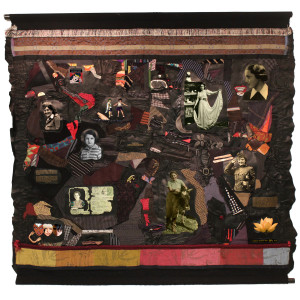
5 ft. sq. leather, metal, canvas, paint, fabric & mixed media
GOALS and OBJECTIVES
- explore issues of social justice and social justice activism as upstander
- understand why and how people take action to address injustice
- develop empathy for people whose experiences differ from our own
- inspire participants (through art) to be upstanders for social justice
- recognize how one’s life history shapes personal perspectives on upstander behavior and social justice
The Holocaust, slavery, lynchings, and other human rights abuses are not, as we would like to believe, accidents in history. They happened because individuals, groups, and nations made decisions and choices to act or not to act.
REFLECT upon the following questions.
- How have I been complicit in perpetuating racism, sexism and stereotypes or creating a climate of animosity, xenophobia, or homophobia—(i.e., through jokes, comments, and casual remarks, etc.)?
- How have I exhibited upstander behavior in either mundane or monumental ways?
MAKE a parallel list of upstander behaviors vs bystander behaviors.
VISUALIZE Social Justice
Envision how we might change our institutions and our psyches…to take seriously the nurturance of consciousness, conscience, compassion, and community.
RESOURCES
- Curricular Encounters with Holocaust Heroes: Fierce Females—Tapestries and Sculpture by Linda Stein @ http://h2f2encounters.cyberhouse.emitto.net/
- Knight, W. B. (2010). Never again a (K)night with Ben. In A. Arnold, A. Kuo, E. Delacruz & M. Parsons (Eds.), G.L.O.B.A.L.I.Z.A.T.I.O.N, Art, and Education (pp. 126-134). Reston, VA: The National Art Education Association.
- Stein, L. (Ed.). (2016). Holocaust Heroes: Fierce Females—Tapestries and Sculpture by Linda Stein. Philadelphia, PA: Old City Publishing.
